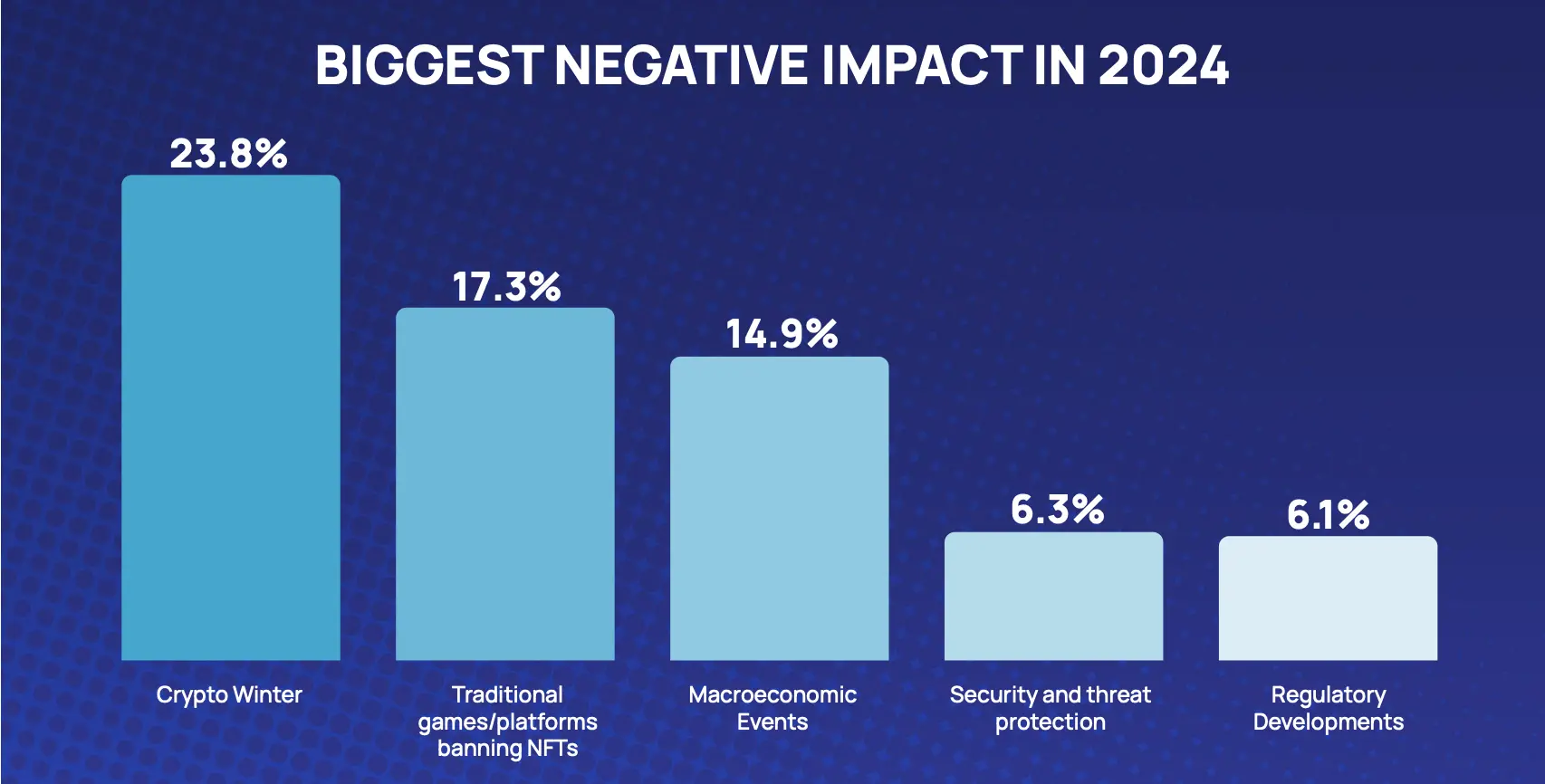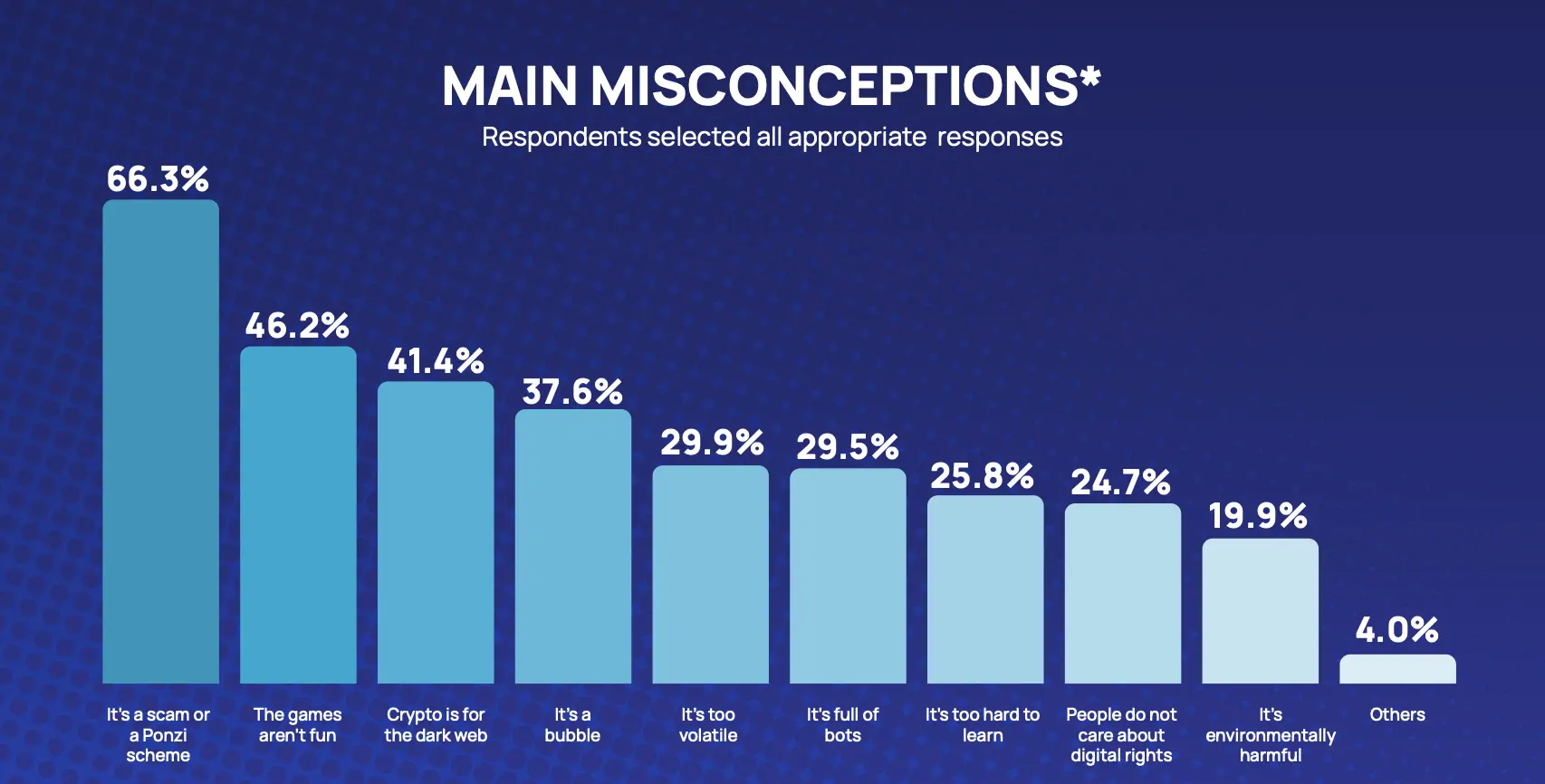Author: cointelegraph
Compiled by: ChainCatcher
According to a survey by the Blockchain Game Alliance, 42% of respondents believe that the player reward model is the biggest advantage in attracting new users. However, as the GameFi industry develops, blockchain games will face multiple challenges in 2025.
In an interview with Cointelegraph, Seraph CEO Tobin Kuo said that maintaining player engagement, adopting new technologies, and building a sustainable in-game economy are obstacles that GameFi must overcome to remain competitive.
Tobin pointed out that more than 60% of players will quit Web3 games within 30 days. He believes that the lack of long-term incentives and poor game mechanics are the main reasons why Web3 games are difficult to develop sustainably. He told Cointelegraph:
“As the attention economy accelerates, projects must prioritize player-centric design, focusing on immersive narratives, skill-based rewards, and game mechanics that transcend a ‘revenue-first’ model, rather than relying on trends to attract attention.”
In 2025, developing better blockchain games will also require integrating emerging technologies, such as generative AI, to enhance the player experience. Tobin pointed out that GameFi projects that fail to adopt new technologies in a timely manner will typically see a 30%-40% drop in player retention.

According to a survey of the Web3 gaming industry, these issues are considered the biggest challenges facing the GameFi sector in 2024. Source: Blockchain Game Alliance
Building a sustainable in-game economy
Tobin emphasized: "Unstable in-game economies are the main reason for project bankruptcies." He believes that building a sustainable token model for Web3 games that controls inflation and is based on data-driven player rewards is the key to maintaining player retention.
He further explained: “Dynamic loot distribution, staking-based rewards, and player-controlled economic strategies through decentralized autonomous organizations (DAOs) are likely to become best practices for GameFi development.”
Take Hamster Kombat, for example. The point-and-click game made headlines in July when it surpassed 300 million users in less than five months. However, after what is considered the largest token airdrop in cryptocurrency history, the game’s active user base plummeted by 86%. As of November, the game had only 41 million players, a significant drop from its peak of 300 million in the summer.
The current state of the blockchain gaming industry in 2024
The Blockchain Game Alliance recently released the 2024 State of the Industry Report, which surveyed 623 professionals in the Web3 gaming industry.
The report shows that about 53% of respondents believe that poor user experience and complex user interface are the biggest challenges hindering new players from entering Web3 games.

Industry insiders outline the main issues facing the GameFi space. Source: Blockchain Game Alliance
An early report by BGA indicated that 10% of users gave up on entering Web3 games due to the complexity of setting up a crypto wallet.
At the Blockchain Futurist Conference in August, Anomaly Games CEO Long Do said that abstracting blockchain functionality and allowing players to interact with the chain without knowing it is key to driving adoption.
Additionally, BGA’s 2024 report also revealed that 33% of respondents believe that poor gaming experience is one of the top three challenges currently facing the industry.
According to a OnePoll survey conducted earlier in 2024, most of the players surveyed among more than 2,000 adults lacked knowledge about blockchain games.
The survey showed that 52% of respondents did not know what blockchain games were, and another 32% said they had heard of blockchain games but had never played them.
Conclusion
With the rapid development of the GameFi industry, changes in player demand and market competition have prompted developers to continuously innovate and optimize. In 2025, how to maintain player stickiness, introduce new technologies, and establish a sustainable economic model will be the key to determining the success or failure of the GameFi project.
















